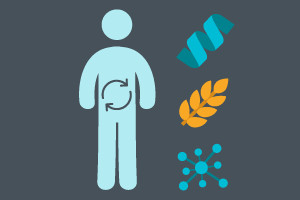Description
As it has been for millennia, human structure is important to all of us. From stick figure drawings to electron microscopy, artists, teachers, health care providers, scientists, and most children attempt to comprehend the human form. We are very interested in learning the forms of people – physicians, nurses, physician assistants, emergency medical services personnel, and many, many others. Traditionally, learning anatomy entailed dissecting the deceased, either directly in the laboratory or through texts, drawings, photographs, or videos. There are numerous excellent resources for studying anatomy. Understanding the human form necessitates a significant amount of effort and a diverse set of resources.
We attempted to present concise videos of human anatomy in this course. Some people will find these images disturbing, and they serve as a reminder to respect the person who chose to donate their remains to benefit our teaching and learning.
Syllabus :
1. Introduction
- Introduction to anatomy
- Anatomy of the physical exam
- Chest surface anatomy
- Clinical examination of the chest
- Conventional radiography
- Computed Tomography (CT)
- Ultrasound
- Magnetic Resonance Imaging (MRI)
2. The Lungs
- The thorax (Chest wall)
- Lungs
- Bronchoscopy
- Pleuroscopy
- Chest wall (Lab)
- Chest plate removal (Lab)
- Lung removal (Lab)
- Right lung dissection (Lab)
- Computed Tomography of chest
- Chest radiography
3. Mediastinum and Great Vessels
- Superior mediastinum and thoracic outlet (Lab)
- Mediastinum (Lab)
- Posterior mediastinum and diaphragm (Lab)
4. Anatomy of the Heart
- Heart
- Cardiac surfaces (Lab)
- Coronary arteries (Lab)
- Coronal heart
- Heart removal (Lab)
- Heart internal anatomy (Lab)
- Electrical Conduction System of the Heart (Source: National Heart, Lung, and Blood Institute; National Institutes of Health; U.S. Department of Health and Human Services)
- Clinical examination of the chest
5. Anatomy of the Abdomen
- Abdomen
- Anatomy of the physical exam
- Abdomen surface anatomy
- Abdominal exam
- McBurney's Incision
- Abdominal wall
- Abdomen basics
6. Abdomen (Mesenteric vessels, retroperitoneum and kidneys)
- Right retroperitoneum
- Left retroperitoneum
- Mesenteric vessels
7. Abdomen (Duodenum and pancreas)
- Upper endoscopy
- Duodenal and polyp removal
- Colonoscopy
- Laparoscopic cholecystectomy
- Upper abdomen (lab)
- Duodenum and pancreas
- Whipple procedure
- Normal CT abdomen anatomy
- Renal anatomy
8. Pelvis and Perineum
- Pelvis
- Perineum
- Skeletal pelvis
- Bladder drainage devices
- Female perineum
- Female pelvis
- Female cystoscopy
- Female sagittal pelvis
- Male perineum
- Male pelvis
- Male cystoscopy
- Inguinal ligament and testis
- Male sagittal pelvis
- New England Journal of Medicine - Pelvic Examination









